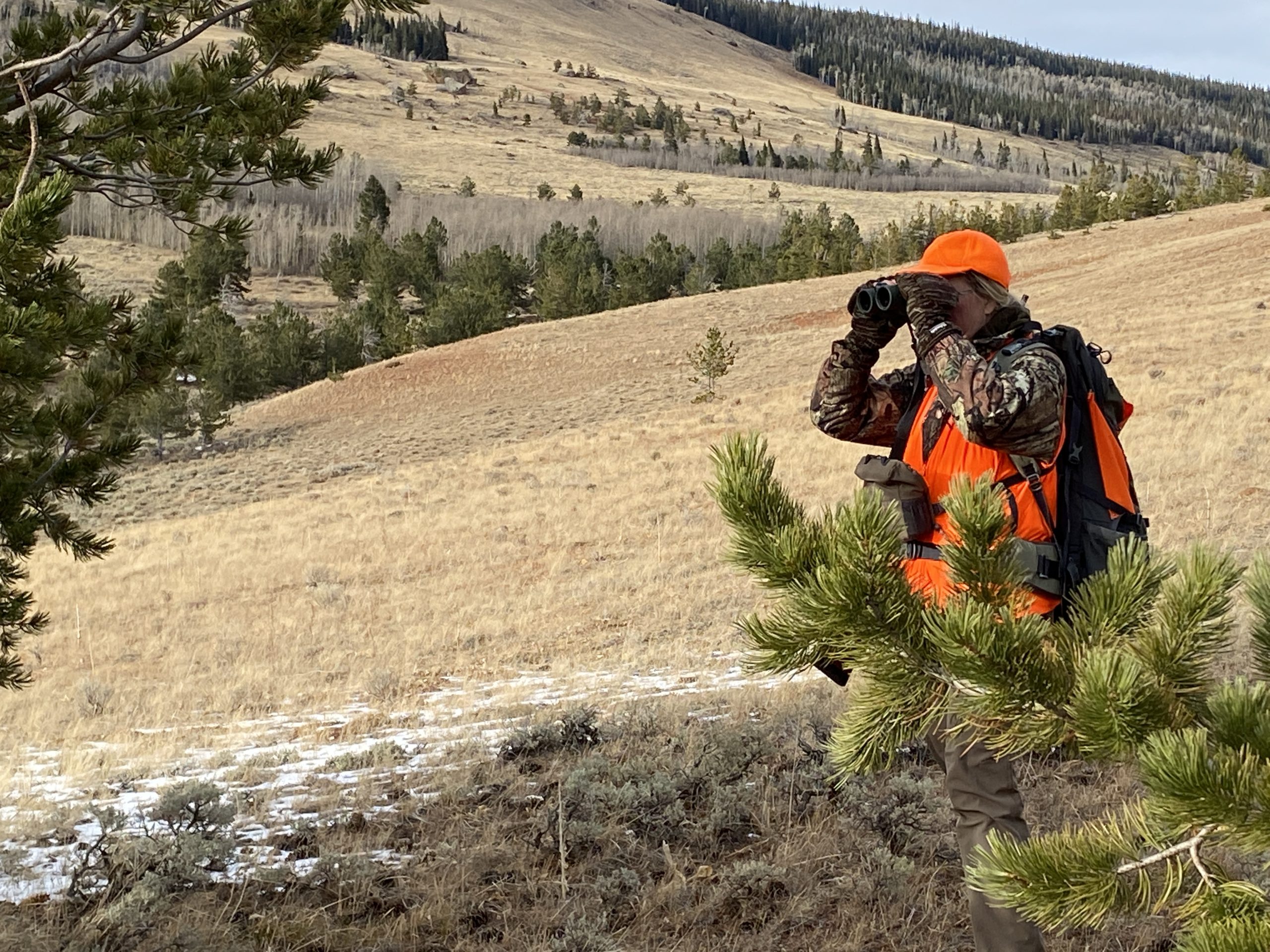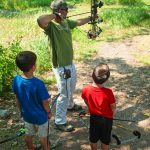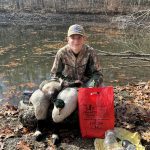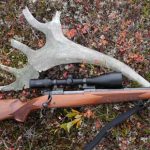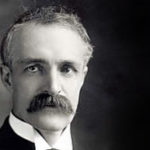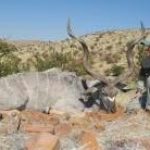Hunters and shooters have been the primary funding source for conservation since 1937.
Photo above: Excise taxes on firearms and archery equipment paid by hunters and recreational shooters have generated $22.5 billion in support of wildlife conservation over the past eight and a half decades. Photo by Trail’s End Media.
Time passes and things change; and in the process, even important things get taken for granted. It is inevitable, it seems; an aspect of human existence we often realize only in hindsight, when our memories are jolted by some significant event. This might be a catastrophe of some kind or it might be an important anniversary. Whatever the trigger, remembering matters of consequence is important in life, not only to give recognition to the consequences of important things but also to provide perspective by imagining what the world would have been without them.
Conservation of the earth’s wildlife and natural areas is a complex business. It is, arguably, the most complex business of all, lying as it does at the intersection of culture, politics, and economics, and ultimately grappling with the endless complexities of ecology and human nature. As international conventions on biodiversity protection, animal use and trade, and climate change attest, conservation is now recognized as a global challenge. Addressing this crisis will obviously determine the kind of lives we will live and the kind of world our descendants will inhabit.
What is equally clear is that failing to recognize and address our conservation realities will result in further wild species declines and escalating extinction rates, and an increasingly rapid deterioration in the planet’s life supporting systems. These are not problems for other countries or societies alone. No matter how well off we may be, conservation’s crisis brings unwelcomed gifts to us all. Furthermore, solving our shared problems will require many things: knowledge, determination, and commitment come to mind. But it will also require enormous financial resources, for conservation is not an inexpensive business.
In some ways, of course, our problems are not new. At the turn of the twentieth century, wildlife in North America was in a state of crisis. Virtually all the iconic species we know and cherish today, such as bison, white-tailed deer, wild sheep, mule deer, elk, moose, pronghorn, black bear, wild turkeys, and a variety of duck and songbird species were extirpated from many regions or in very low abundance across vast areas of the continent. Other species and well-recognized subspecies such as the great auk, Merriam’s elk, Audubon bighorn, the sea mink, the Labrador duck, Carolina parakeet, and passenger pigeon were even less fortunate. Their disappearance and endless silence are a reminder of extinction’s reality and a clarion call for whom the bells toll.
Following European colonization and expansion, during the eighteenth and nineteenth centuries, living wild resources were harvested without limitation in North America, and market hunters made a living by hunting and selling animal hides, meat, and other products to insatiable European and expanding domestic urban markets. These were the culminating days of wildlife slaughter in North America, conducted at virtually a continental scale, and one that would eventually set in motion a social upheaval that would lead to the modern wildlife management systems we know today. Its agitators were a varied lot and included artists and urban elites as well as leaders of the women’s suffrage movement. It also included a new class of “sport hunters” whose members lobbied against market hunting and for the conservation of game species, in particular.
The foment for wildlife was intense and sustained. It resulted in various conservation actions at the turn of the twentieth century that would mold conservation’s future in America. Among a variety of other seminal legislative events, such as the Lacey Act of 1900 (making it illegal to transfer illegally hunted wildlife across state borders) and the creation of the Migratory Bird Treaty Act in 1916, one Act in particular would dramatically impact funding mechanisms for conservation and formally entwine hunting and conservation funding in perpetuity. Its long-term consequences would be enormous, for wildlife and for recreational hunting.
On Sept. 2, 1937, President Franklin D. Roosevelt signed into law the Wildlife Restoration Act, which would go on to influence conservation for the next eighty-five years and represent the main federal-funding source for wildlife conservation in the United States. The Pittman-Robertson Wildlife Restoration Act, as it is known today, originally placed an 11 percent excise tax on long guns and ammunition. In 1970, the Act was revised to include an 10 percent excise tax on pistols and revolvers, and in 1972, an 11 percent tax on archery equipment was also added. The money derived from these taxes are allocated into a special fund, called the Federal Aid to Wildlife Restoration Fund, which is managed by the US Fish and Wildlife Service of the Department of the Interior, specifically for the purpose of wildlife restoration, conservation, and hunter education and safety programs.
Since 1939, the Act has generated over 22.5 billion dollars for conservation (2021 USD equivalents). Over the last five years, on average, the Act has generated $797 million, annually, for conservation. Currently, Pittman-Robertson funding is the highest it has ever been (even accounting for inflation). In 2022 alone, the Pittman-Robertson Act generated $1.1 billion for conservation! That is $400 million more than it generated in 2021, a 64 percent increase.
Under the program guidelines, US states and territories may receive funding through three different grant programs: wildlife restoration, basic hunter education and safety, and enhanced hunter education and safety. The Wildlife Restoration grant may be used for wildlife-conservation research,wildlife-conservation education, and for purchasing, restoring, rehabilitating, and improving land for wildlife conservation. In addition to this, however, 10 percent of these funds may be used for “wildlife-associated recreation projects.” These projects aim to improve outdoor recreation for hunters and non-hunters alike, including the maintenance and creation of trails, bridges, observation towers, blinds, and water access points.
So how much of these Pittman-Robertson funds are actually used for wildlife conservation versus being used, let’s say, for hunter education and public shooting ranges? The short answer is approximately 80 percent of the funds generated by the Act are allocated directly to conservation efforts.
The remaining funds are largely allocated to hunter education and safety programs and may be used for the construction and maintenance of public shooting ranges. Further, as of 2020, the Modernizing the Pittman-Robertson Fund for Tomorrow’s Needs Act came into law, which allows hunter education and safety grants to be used to improve hunter and sport-shooter recruitment.
In addition to these allocation areas, some of the money generated through the Act also goes towards multistate conservation grants, which are used to address conservation issues that span multiple states. These funds can go to a state, a group of states, the FWS itself, or non-governmental organizations. Some money is also retained for administration purposes.
The Act is designed such that no money generated from it can be wasted. If any interest is earned on the money generated from the Pittman-Robertson Act, this money must be transferred into the North American Wetlands Conservation Account. Further, any money that is not spent in two years must be transferred to the Migratory Bird Conservation Fund. Therefore, the legislation surrounding the Act prevents any money from seeping through the cracks—all must be used for good purpose. One can only marvel at the forward-looking subtlety of this legislation.
The money generated by the Act is allocated to all fifty states, and all five inhabited US territories, but not Washington, DC. The funds are not given out arbitrarily but are allocated based on a formula to determine how much each state and territory should receive. For the largest share (80 percent) of the money, that given to wildlife restoration, funding is based on state land area, inland water area, and hunting license sales. States are not given a free ride, however; the state itself must generate 25 percent of the funds for each project funded under the program. Further, no state can receive less than 0.5 percent, or more than 5 percent, of the available wildlife-restoration funds. The territories, except for Puerto Rico, are more limited and cannot receive more than 0.17 percent of the total wildlife-restoration funds.
Of course, many non-hunters purchase firearms for self-defense, sport shooting, and as a hobby, which means that hunters do not generate all of the Pittman-Robertson funding. And there are some pretty wild statistics out there regarding how much money hunters versus other firearm enthusiasts actually do contribute. Estimates vary from just 5 percent, as suggested by certain animal-rights groups, to implying that all Pittman-Robertson funding is being generated from hunting, from certain pro-hunting groups. The truth, of course, lies somewhere in between, and depends upon how you search for it.
Some of these estimates of excise tax sources are derived from the National Survey of Fishing, Hunting and Wildlife-Associated Recreation. In this survey, a sample of hunters and anglers indicate how much money they spent on a variety of hunting/angling-related items, including rifles, shotguns, pistols, ammunition, archery equipment, etc. Statisticians then use this sample to estimate expenditures and excise tax payments by all hunters in the US. Based on this method, in 2016, hunting would have directly contributed $629 million to the Pittman-Robertson Act. This would represent nearly 80 percent of the $779 million generated from the Act that year—this, however, is rather far from the truth. These statistics are biased, because they rely on self-reporting. Furthermore, an unknown portion of reported expenditures may be towards used products that are not taxed, and a relatively small number of people are used to represent the entire US hunter population.
Official tax receipts provide a more accurate assessment of how much money hunters actually contribute to the Pittman-Robertson fund. The US Fish and Wildlife Service (USFWS) keeps a record of how much funding is generated for the Pittman-Robertson Act from the sale of various hunting-related items. Importantly, however, there is no record of who purchased the products that contribute to these excise tax funds and the sample obviously includes many firearm enthusiasts who are not hunters.
The market research firm Southwick Associates conducted a study addressing this very issue and found that hunters in recent years contributed approximately 22.5 percent of the Pittman-Robertson fund. Based on this percentage, hunters contributed approximately $179 million to the program each year (based on the latest 5-year average). Therefore, hunting is not the main source of Pittman-Robertson funding, but hunters do make an astounding contribution, through their excise tax payments, to conservation each year. Recreational shooters provide even more!
The Pittman-Robertson Act has had a major and lasting impact on wildlife conservation in the United States over the last eighty-five years. Working continuously, and often taken for granted or even unknown in many circles, it has generated $22.5 billion in support of wildlife, an amount we would have been hard pressed to find from any other source. The Act has changed over the years to the benefit of conservation, and has survived many legislative challenges; and it will likely need to continue to adapt as conservation faces new twenty-first-century problems. Thanks in significant part to this Act, terrestrial wildlife in America has recovered significantly from the mistakes of the past, affording us the freedom to enjoy abundant wildlife, and the many benefits wild species provide.
In this eighty-fifth birthday year, we are encouraged to reflect on the Pittman-Robertson Act, on the far-sighted individuals who created it, and the multitudes of American citizens who fought for wildlife over the years that preceded it. Good ideas and wishful hopes for wildlife will never be enough to secure conservation success. In the end, it requires dedicated funding to win the battles we fight on wildlife’s behalf.

